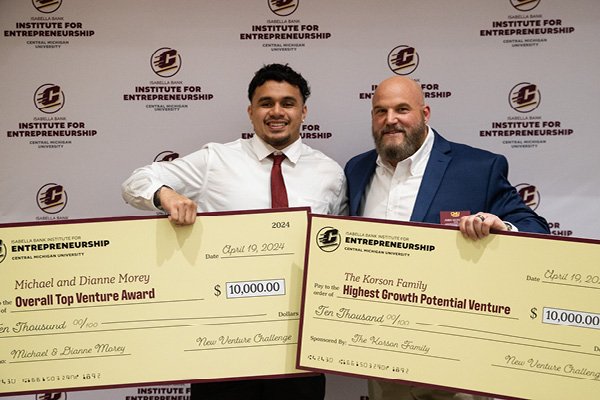
Start up
Passion. Potential. Pitches. Don't miss any of the 2025 New Venture Challenge excitement.
Tune in Friday, April 11 at 1 p.m. for great ideas and fierce competition. Then, join the judges, mentors, spectators and teams as they see who is going home with thousands of dollars in venture financing. The awards broadcast begins at 6:30 p.m. and one team will walk away as the overall best venture.
Central Michigan University’s College of Business Administration is the home of the Isabella Bank Institute for Entrepreneurship and the first Department of Entrepreneurship in the state of Michigan. We are a student-centric hub where experiential, curricular, and external entrepreneurial opportunities intersect.
Our mission is to maximize student success by fostering a campus-wide entrepreneurial mindset that promotes inter-disciplinary collaboration and the creation of new ventures.
We aim to create innovative programming, boost cross-campus and ecosystem collaboration and provide a comprehensive mentoring program.
Our institute provides extracurricular opportunities and is open to all undergraduate and graduate CMU students.
Are you interested in becoming an entrepreneur?
Every journey is unique. Explore the opportunities that interest you.
A major boost in the fight against Alzheimer’s disease and other neurodegenerative disorders is underway, thanks to a $2,751,565 NIH grant awarded to the University of Florida, which will subaward funding to Central Michigan University. The project focuses on uncovering the complex relationship between two key proteins, TDP-43 and Tau, and how their dynamic interactions contribute to disease.
Dr. May Khanna from the University of Florida is the principal investigator (PI), while Dr. Michelle Steinhilb from Central Michigan University is a co-investigator. The portion of the grant coming to CMU over the anticipated five-year life of the award is $274,770. Dr. Steinhilb’s team will determine the physiological and pathological consequences of TDP-43 and Tau interaction using a fruit fly model system, while Dr. Khanna’s lab will focus on the biophysical and molecular intricacies of these protein interactions, with the ultimate goal of developing better treatment options.
You’ve probably heard of Tau when it comes to Alzheimer’s research—it’s one of the main proteins that’s been linked to the disease. But TDP-43? That name might not be as familiar, even though it plays a role in conditions like Alzheimer’s, ALS, and other neurodegenerative disorders. What’s fascinating, and troubling, is that these two proteins often show up together in diseased brains, but no one really understands why. This project aims to change that.
The study is digging deep into how TDP-43 and Tau interact. Using techniques like nuclear magnetic resonance (NMR) and surface plasmon resonance (a way to study how molecules bind), the team will map out their relationship and look for ways to disrupt harmful interactions.
Even more exciting, they’ll test small molecules and peptides to see if these could break up the “bad” interactions between TDP-43 and Tau—basically, finding new tools to fight the proteins’ harmful effects.
And they’re not stopping there. By using a humanized knock-in disease model, the researchers will study how these proteins behave over a natural lifespan, looking at what happens during normal aging and after injuries. This approach could offer clues that other methods miss, especially since it doesn’t rely on artificially ramping up protein production or adding outside chemicals.
The endgame? Therapies that work better than anything we’ve got now. “Right now, treatment options for neurodegenerative diseases like Alzheimer’s are inadequate,” said Dr. Steinhilb. “Our goal is to identify molecular features in these protein interactions that can be targeted to create truly effective therapeutics.”
If successful, the research could pave the way for groundbreaking treatments that tackle not just the symptoms but the underlying causes of these diseases.
“This project is a team effort through and through,” said Dr. Steinhilb. “Working with Dr. Khanna and combining our expertise is what makes this possible. We’re optimistic that we can make a real difference.”
With the stakes so high, the research has the potential to transform how we understand and treat neurodegenerative diseases, offering new hope for patients and families affected by Alzheimer’s disease and similar conditions.

Explore special opportunities to learn new skills and travel the world.

Present your venture and win BIG at the New Venture Challenge.
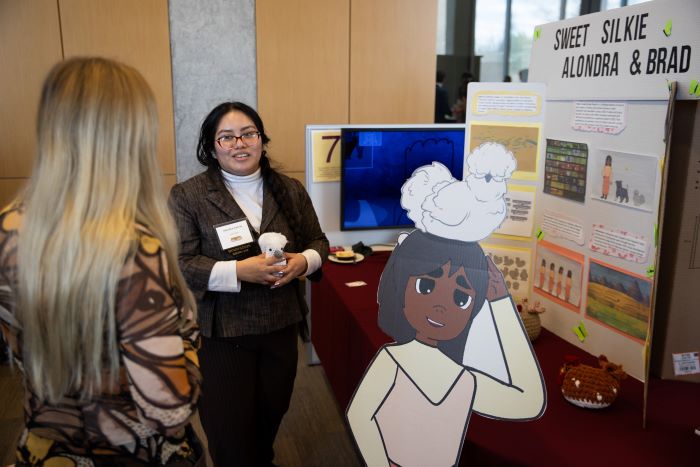
Boost your entrepreneurial skills through our workshops, mentor meetups and pitch competitions.
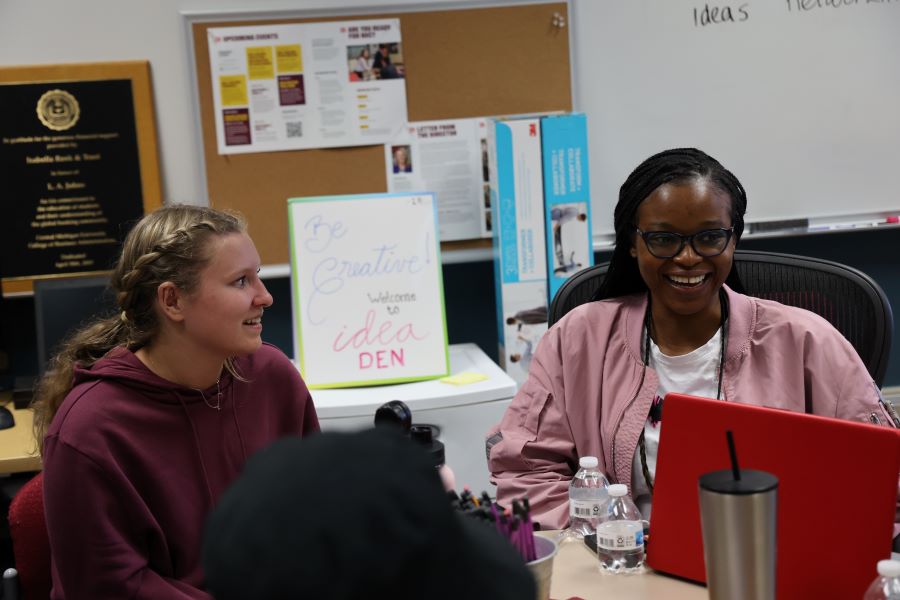
Learn about the entrepreneurship makerspace on campus in Grawn Hall.
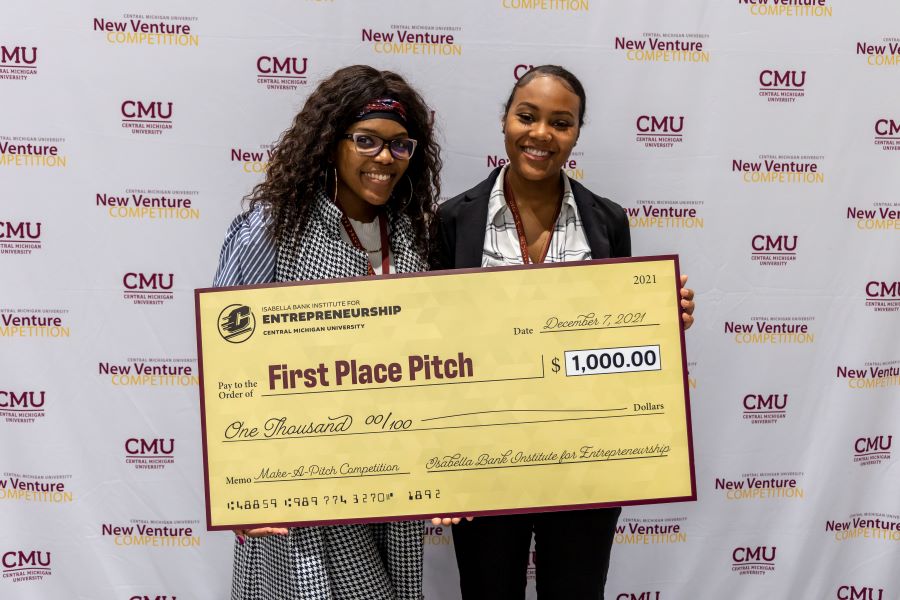
Present a 2-minute pitch at the Make-A-Pitch Competition and you could win prizes and bragging rights!
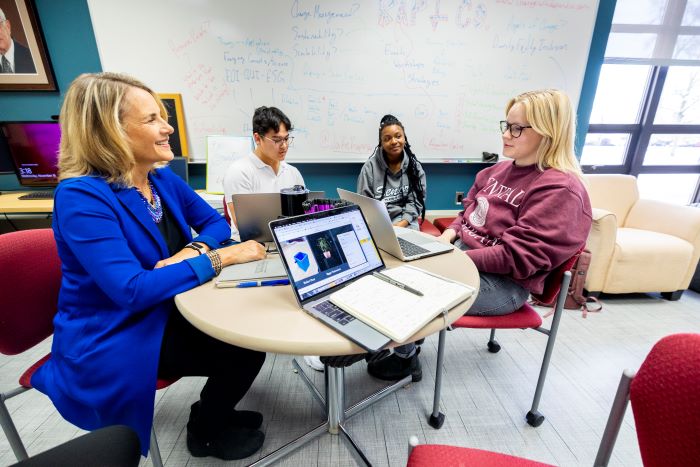
Connect with mentors and faculty who are here to support the next generation of CMU entrepreneurs.
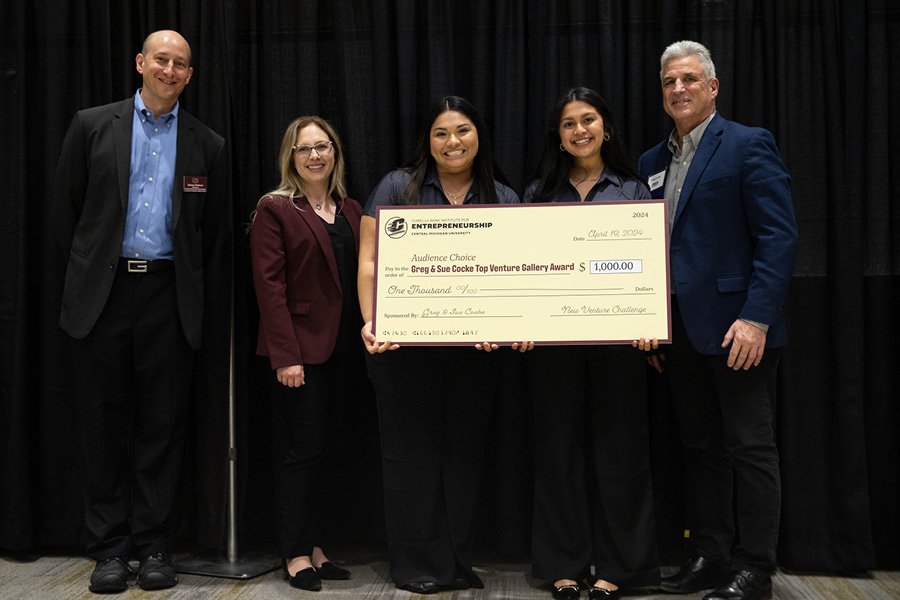
Are you a CMU alum looking to support CMU student entrepreneurs? Learn how you can support or donate to the Entrepreneurship Institute.